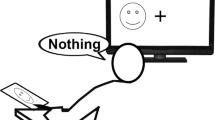Abstract
Altered states of consciousness (ASC), especially hallucinatory ones, are philosophically and scientifically interesting modes of operation of the mind–brain complex. However, classical definitions of ASC seem to capture only a few common characteristics of traditionally regarded phenomena, thus lacking exact classification criteria for assessing altered and baseline states. The current situation leads to a priority problem between phenomena-based definitions and definition-based phenomena selection. In order to solve the problem, this paper introduces a self-mapping procedure that is based on a three-part analysis on certain aspects of hallucinatory altered consciousness. Starting with commonalities found in current definitions of ASC, issues with self-evaluation, sources of data, and baseline comparison are analyzed first. Next, the concept of alterations is examined with respect to temporal dynamics, change mechanisms, and mental subsystems. Finally, hallucinatory phenomena are discussed regarding various definitions, the relationship between “external” and “internal,” and the “trueness” issue of hallucinations. Conclusive to the analysis above, a technically based working definition of ASC and a stepwise operationalization procedure are also proposed.
Similar content being viewed by others
References
Aleman, A., & Larøi, F. (2008). Hallucinations: The science of idiosyncratic perception. Washington: American Psychological Association.
Dittrich, A., von Arx, S., & Staub, S. (1985). International study on altered states of consciousness (ISASC). Summary of the results. German Journal of Psychology, 9, 319–339.
Esquirol, J. E. D. (1845/1965). Mental maladies—A treat on insanity. New York: Hafner.
Farthing, G. W. (1992). The psychology of consciousness. Englewood Cliffs: Prentice-Hall.
ffytche, D. (2008). The hodology of hallucinations. Cortex, 44(8), 1067–1083.
Hobson, J. A. (2002). The dream drugstore: Chemically altered states of consciousness. Cambridge: MIT Press.
Hobson, J. A. (2007). Normal and Abnormal States of Consciousness. In M. Velmans & S. Schneider (Eds.), The Blackwell companion to consciousness. Oxford: Blackwell Publishing.
Horowitz, M. (1975). Hallucinations: An information-processing approach. In R. Siegel & L. West (Eds.), Hallucinations: Behavior, Experience and Theory. New York: Wiley.
James, W. (1902/1994). The varieties of religious experience: A study in human nature. New York: Modern Library.
Mortimer, A. M., & McKenna, P. J. (1994). Levels of explanation: Symptoms, neuropsychological deficit and morphological abnormalities in schizophrenia. Psychological Medicine, 24, 541–545.
Nagel, T. (1974). What it is like to be a bat? The Philosophical Review, 83(4), 435–450.
Nichols, D. E. (2004). Hallucinogens. Pharmacology & Therapeutics, 101, 131–181.
Revonsuo, A. (2006). Inner presence: Consciousness as a biological phenomenon. Cambridge: MIT Press.
Shanon, B. (2003). Hallucinations. Journal of Consciousness Studies, 10(2), 3–31. Imprint.
Strassman, R., Qualls, C. R., Uhlenhuth, E. H., & Kellner, R. (1994). Dose-response study of N,N-dimethyltryptamine in humans. II. Subjective effects and preliminary results of a new rating scale. Archives of General Psychiatry, 51, 98–108.
Tart, C. T. (1975). States of consciousness. New York: E.P. Dutton.
Vaitl, D., Birbaumer, N., Gruzelier, J., Jamieson, G. A., Kotchoubey, B., Kubler, A., et al. (2005). Psychobiology of altered states of consciousness. Psychological Bulletin, 131(1), 98–127.
VandenBos, G. R. (Ed.). (2007). APA dictionary of psychology. Washington: American Psychological Association.
Vollenweider, F. X., & Geyer, M. A. (2001). A systems model of altered consciousness: Integrating natural and drug-induced psychoses. Brain Research Bulletin, 56(5), 495–507.
Author information
Authors and Affiliations
Corresponding author
Rights and permissions
About this article
Cite this article
Móró, L. Hallucinatory altered states of consciousness. Phenom Cogn Sci 9, 241–252 (2010). https://doi.org/10.1007/s11097-010-9162-2
Published:
Issue Date:
DOI: https://doi.org/10.1007/s11097-010-9162-2




